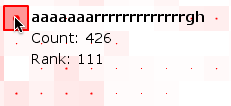Presenting for the Taxonomy Community of Practice: IA and Taxonomy
I’m presenting for the Taxonomy Community of Practice web seminar today. I’ll be talking about a long-term, enterprise-level strategy and design engagement for a financial services client, sharing work that combines information architecture and taxonomy efforts over the past year.
The agenda for the call includes several other speakers; it should be a strong showcase of information architecture and taxonomy work from different settings.
If you’d like to listen, some details are below. Registration and more information is available from www.earley.com/events.htm
Date and time: Friday, December 1st, 2006 – 2:00 to 3:30 PM EDT
Duration: 90 minutes
Format: Teleconference
Cost: $50 per attendee
Register for the session (you will receive dial-in instructions and slides the day before the call)
Description:
User Experience design is often thought of as distinct or different from taxonomy design. What are good IA practices and how do they influence taxonomy design? In this session you’ll hear from three experienced IA’s who will share specific examples from their organizations and consulting projects that will illustrate principles that you can apply in your taxonomy projects.
In this session, hear about:
- a user experience design effort that combines information architecture and taxonomy approaches for a major financial services client
- specific experiences applying IA with Compaq and HP and “business taxonomies” – taxonomies that live within strict business limitations
Presenters:
Seth Earley, Earley & Associates
Joe Lamantia
Bob Goodman
Andrew Gent, Hewlitt Packard


